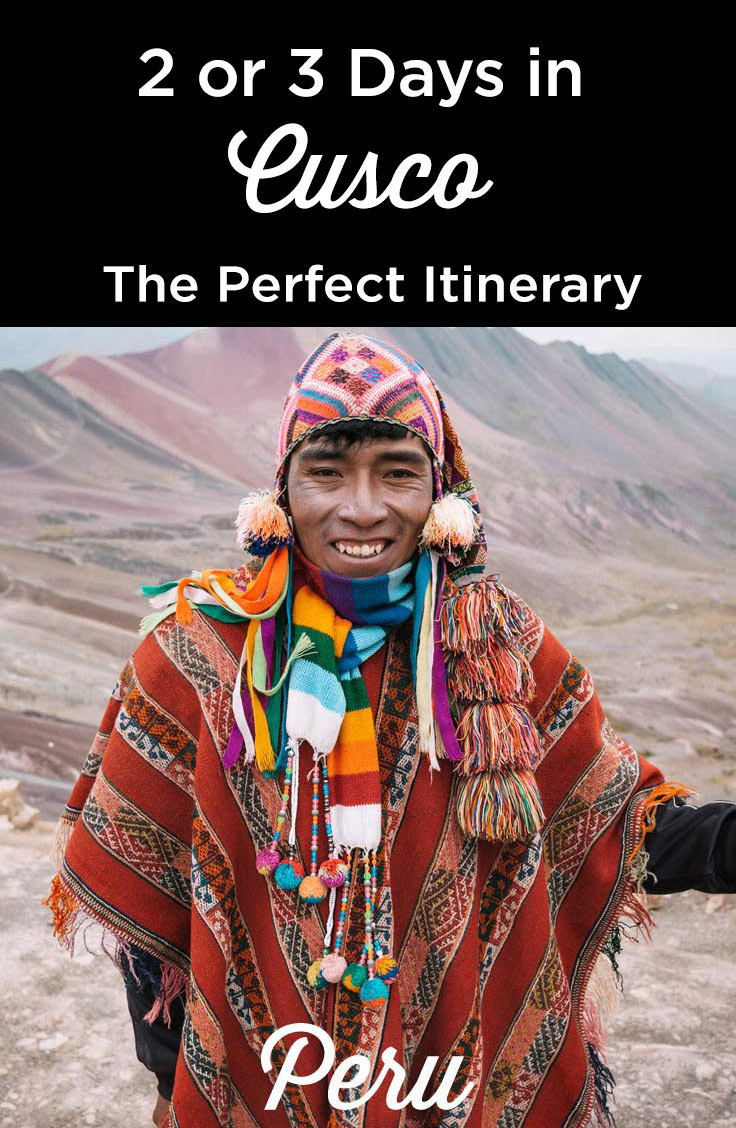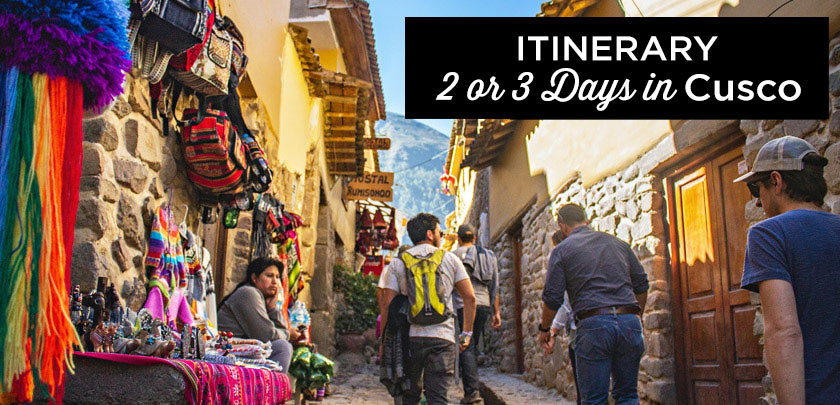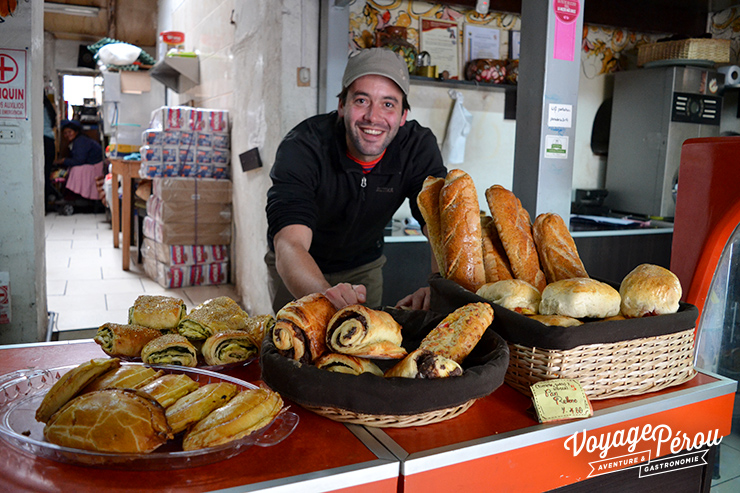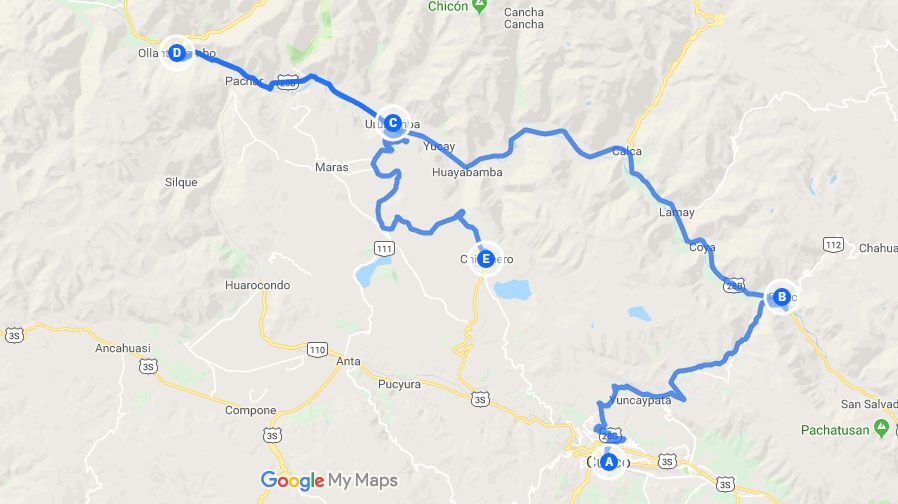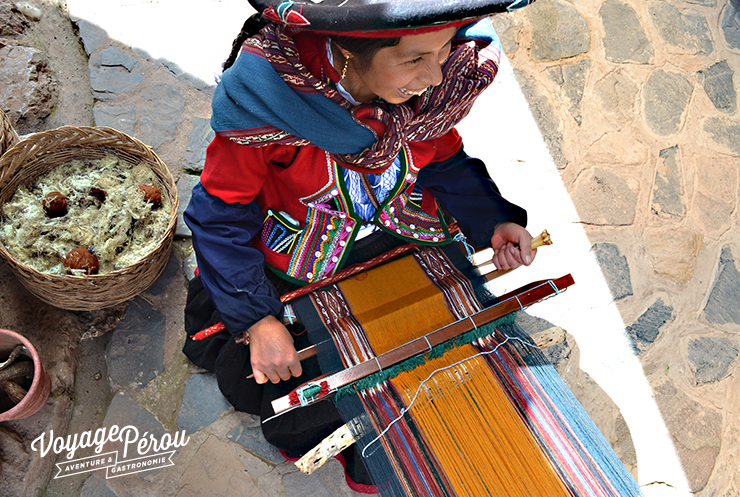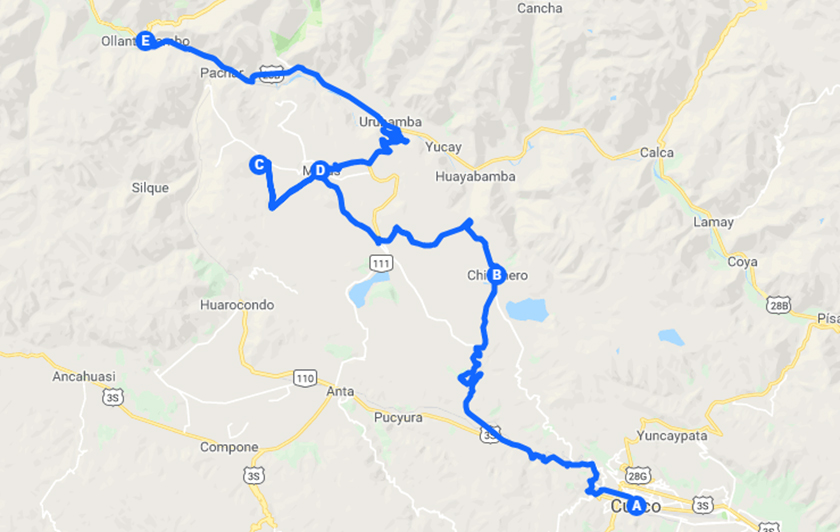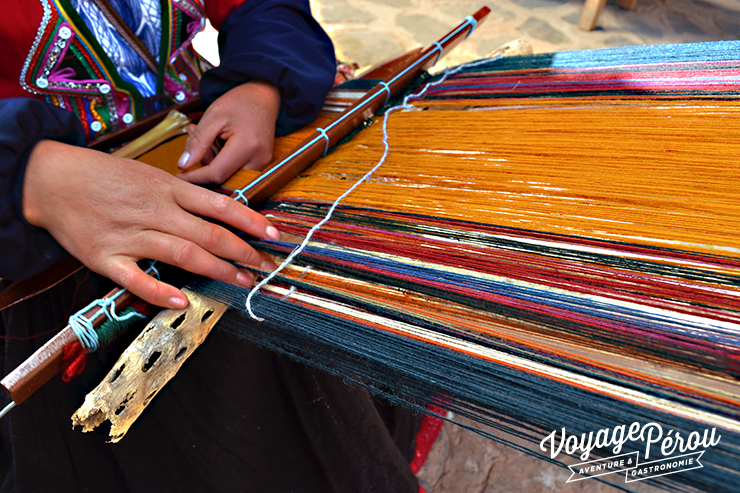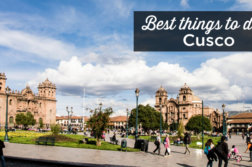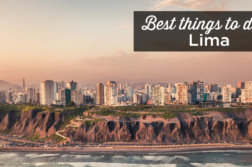How to Spend 2 or 3 Days in Cusco: Best Things to Do and See
Planning to spend 2 or 3 days in Cusco?
Great idea!
This city in southern Peru, once the capital of the powerful Inca Empire, is now one of the top destinations in South America.
Recognized as a UNESCO World Heritage Site since 1983, Cusco is a unique mix of Inca ruins, colonial architecture, local markets, and stunning views at 3,400 meters above sea level.
Whether you’re stopping here before heading to Machu Picchu or looking to explore the Sacred Valley, this itinerary will help you make the most of your time in Cusco.
In this article, I share the best things to do in 2 or 3 days in Cusco, with tips, local experiences, and hotel suggestions for every budget.
What are the best things to do in Cusco in 2 or 3 days? Where to stay?
Let’s find out!
Sommaire
- How to Spend 2 or 3 Days in Cusco: Best Things to Do and See
- Tips Before You Start Your Trip
- The Best Tours in Cusco
- What about Machu Picchu?
- Where to Stay in Cusco
- Cusco Map: What to Visit in 2 or 3 Days
- Book Your Flight at the Best Price
- Rent a Car in Peru
- Traveling to Peru? These articles will help you!
Tips Before You Start Your Trip
To make the most of your 2 or 3 days in Cusco, here are a few essential tips to keep in mind before diving into your itinerary:
Buy the Tourist Ticket
If you plan to visit the top attractions in Cusco and the Sacred Valley, you’ll need the tourist ticket—and it’s not optional. Entry to these sites is only available with the ticket; you can’t purchase individual entrance tickets separately.
There are two main types of tickets:
- Integral Ticket (130 soles): Includes 16 attractions in Cusco and nearby areas, valid for 10 days.
- Partial Ticket (70 soles): Includes specific circuits, valid for 1 or 2 days depending on the option selected.
For all the included sites and how to get your ticket, read my full guide: Cusco Tourist Ticket: Complete Guide.
Or simply book it in advance here:
Be Aware of the Altitude
Cusco sits at 11,150 ft (3,400 m) above sea level, and altitude sickness can affect anyone—even if you’re young and in great shape.
Symptoms include headaches, fatigue, nausea, or shortness of breath, and in rare cases, it can lead to more serious issues. It’s hard to predict who will be affected, so it’s best to be cautious.
If you’re flying in directly from Lima, take it easy on your first day. Avoid stairs (especially up to San Blas), skip alcohol, eat light, stay hydrated, and rest if needed.
If you’ve already spent time in Arequipa or Lake Titicaca, you might already be acclimated and feel fine in Cusco.
You can find more advice in my full article with tips to prevent altitude sickness in Cusco.
Day 1 Overview: Plaza de Armas, Hatun Rumiyoc, San Blas
9:00 am: Begin your day in the Plaza de Armas, the vibrant heart of the city. Once the site of the palace of Huayna Capac, it now hosts beautiful colonial buildings like the Iglesia de la Compañía de Jesús (Church of the Society of Jesus).
Don’t miss the views from the balconies, the baroque architecture, and the impressive paintings by local artists.
Entrance fee: 16 soles (not included in the tourist ticket)
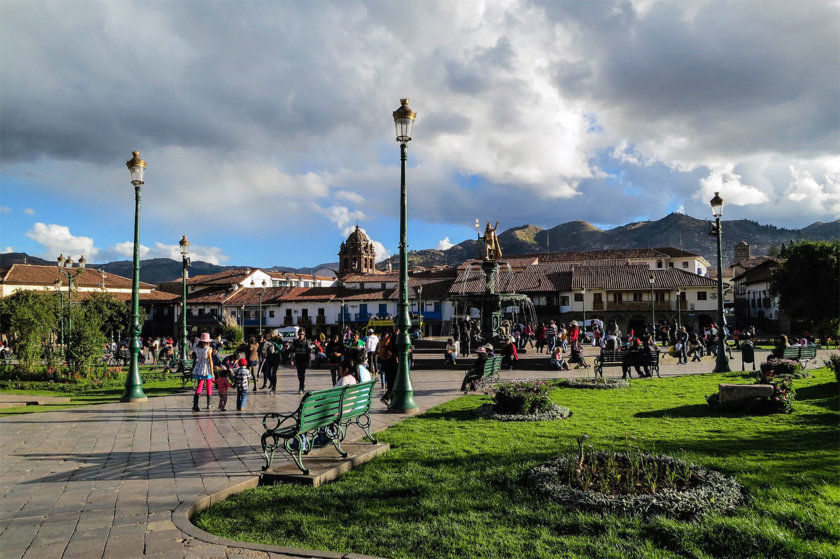
9:50 a.m.: Head to the Plaza de Armas and join a Free Walking Tour—a great way to kick off your day in Cusco.
Look out for the guide wearing the official FWT t-shirt. Over two hours, you’ll explore some of Cusco’s most iconic neighborhoods and landmarks, while sampling authentic Peruvian snacks along the way.
Tips aren’t required, but always appreciated—especially since this tour offers a solid overview to help you decide what to explore more deeply later. Check out their website here.
12:30 p.m.: Time for lunch! I recommend Green Point, a popular vegan restaurant located at Calle Carmen Bajo 235 in San Blas. Their daily menu costs just 30 soles and includes a full meal plus juice. They also serve tasty breakfast sets for 15 soles.
2:00 p.m.: Explore the San Blas neighborhood, known for its narrow cobblestone streets, artisan workshops, and creative energy. Don’t miss the Museum of Pre-Columbian Art (MAP), one of Cusco’s best museums.
The museum houses a remarkable collection of ceramics, gold, textiles, and jewelry from various pre-Columbian cultures. Entry: 20 soles (foreigners), 10 soles (nationals)
3:30 p.m.: Take a relaxing break at El Café de Mama Oli, a cozy café with a charming terrace overlooking the Plazoleta de las Nazarenas. A peaceful spot to unwind away from the crowds.
After your coffee, stroll over to the famous Hatun Rumiyoc Street, where you’ll find one of the finest examples of Inca stonework. Look for the iconic 12-angled stone, perfectly fitted without mortar—so precise that not even a needle could slide between the joints!
This isn’t just artistry—it’s engineering. The Inca’s flawless stonework was designed to resist earthquakes, which makes sense in a seismic region like Cusco. Their techniques continue to amaze even modern architects.
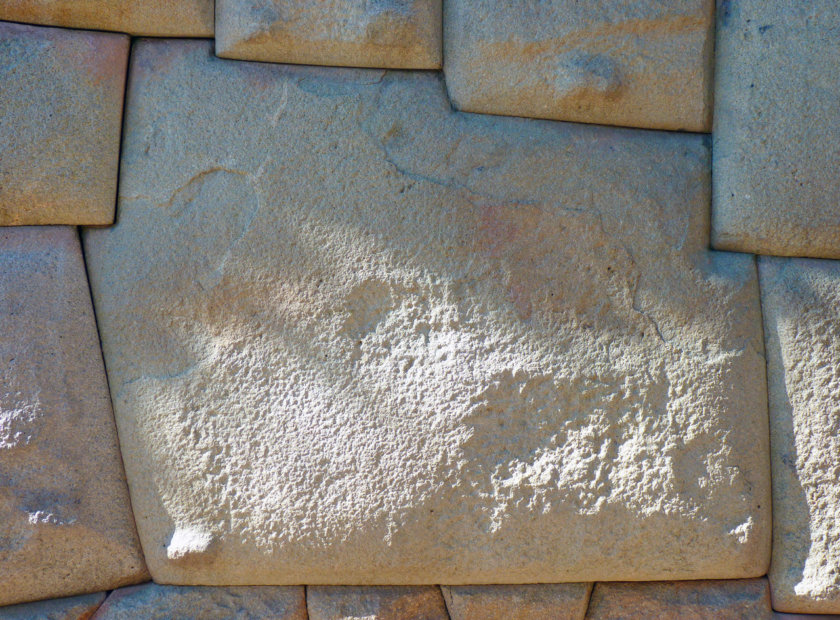
Continue along the street to climb the Cuesta San Blas and catch your breath (inevitable with the altitude) by stopping at craft stores like Sonia’s (Cuesta San Blas 552) or Mercedes’ (Cuesta San Blas 595).
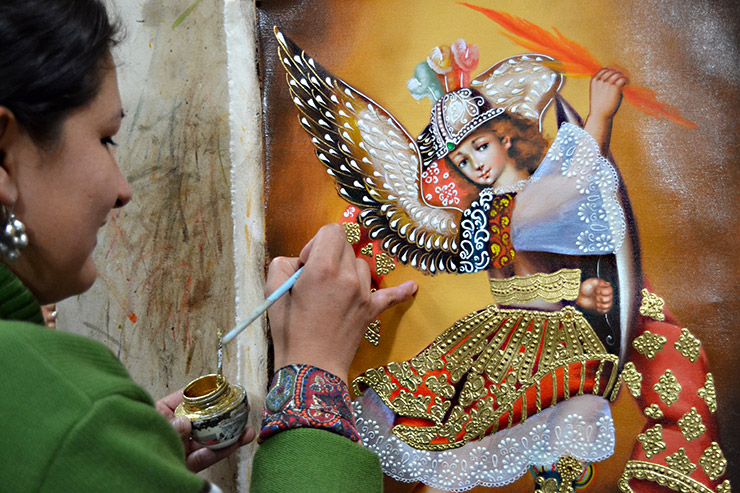
Once you reach the top, turn right to discover the charming Plazoleta San Blas. If you go left along Carmen Alto Street, you’ll soon come across L’Atelier, a cozy café-boutique run by Ingrid, a French expat living in Peru. She curates a lovely mix of handmade creations and local Peruvian brands.
It’s the perfect spot to enjoy a glass of wine or a small bite while overlooking the rooftops and cobblestone streets of Cusco. Around sunset (between 6:00 and 6:30 p.m.), the soft light over the city makes it even more magical.
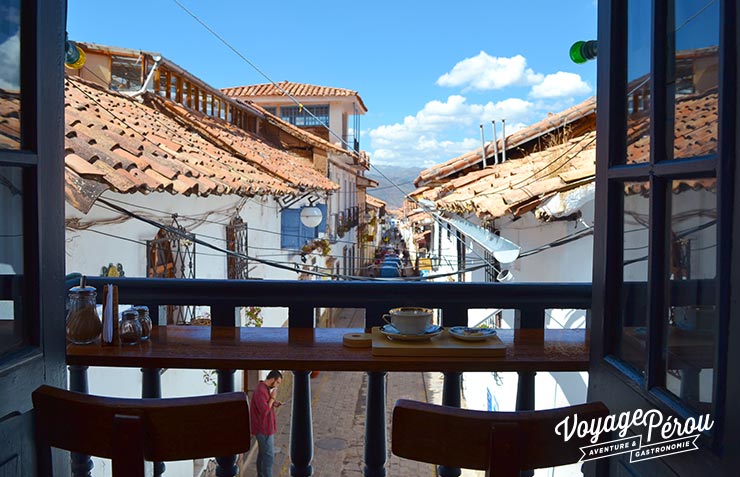
20 hrs: For dinner, several options are available. La perla Criolla with local cuisine at a very good price (Calle Recoleta 737) Map here. With a bit more budget we have La Huerta del Tata (396 Plateros St) Map here. Worth every penny!
If you want something a little more refined and higher budget (50 to 80 soles), there is an Italian option, La Cicciolina (Calle Triunfo, 393, 2nd floor), a true delight. Both their pastas and their famous ossobuco with black beer and caramelized onions, are a true delight!
22 hrs: After a first day full of excitement, it’s time to return to the hotel to rest, as the second day will also be very dynamic.
Day 2: Coricancha, San Pedro Market, and Inca Ruins
9:00 a.m.: Let’s start your second day in Cusco with a great breakfast. Head to Pantastico, a cozy bakery offering fresh bread, pastries, cakes, and even quinoa-based dishes—perfect for a light yet energizing start to your day.
If you’re in the mood for something more filling, Jack’s Café is a local favorite. Their hearty breakfast plates (around 25 soles) can easily be shared, and they offer plenty of vegetarian options too. Ideal if you’re gearing up for a full day of exploration!
10 hours: Visit to Coricancha.
The most sacred place of the Inca empire. In Quechua it means, “Golden Enclosure”. It was used for important ceremonies, such as royal weddings, coronations, but also funerals.
As its name says, it was adorned with gold, but when the Spaniards arrived, it was sacked and destroyed.
Other religious buildings were built directly on its foundations, such as the convent of Santo Domingo. Entrance fee: 15 soles (not included in the tourist ticket).
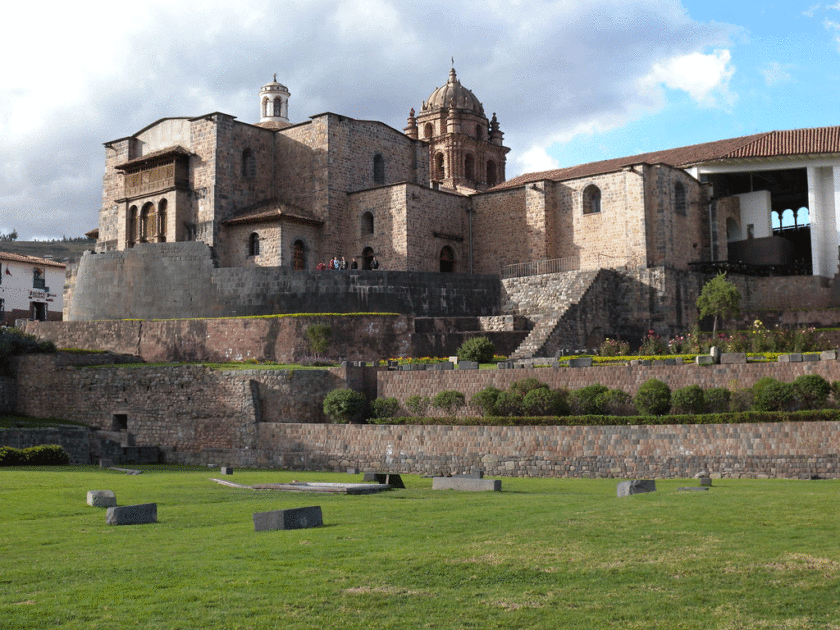
11:30 hrs: Visit to the Center of traditional textiles of Cusco (Avenida El Sol 603). The center is an NGO that brings together local communities of artisans, and aims to preserve and promote the tradition of weaving in Cusco.
You will learn the different techniques used over the centuries, and how it is done in different communities.
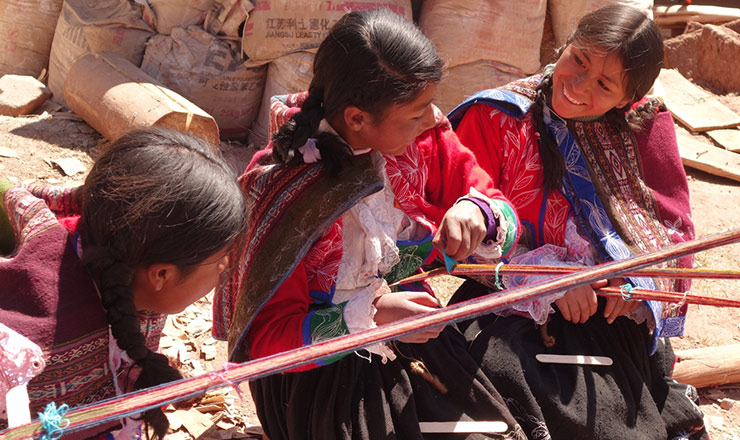
12:30 hrs: It is impossible to visit Cusco without passing by the San Pedro Market, the main and oldest market in the city. You can discover the great variety of Peruvian products, local specialties and curiosities, such as cow nose and frog soup.
Several stalls offer typical Peruvian lunch menus at more than reasonable prices.
The second option, very close to the Plaza de Armas, is Kintaro, a Japanese restaurant whose specialty is not sushi, but rather generous bowls of soup and chicken-based dishes, also very good, with a totally different style and at a more economical price.
22 hrs: To end our two days in two days in Cusco why not try a good pisco-based cocktail at the Pisco Museum.
You can find a great selection of cocktails from about 22 soles and, in addition, there is live music every night from 21h30, so a good vibe is guaranteed.
Day 3: Sacred Valley of the Incas
If you’re spending 3 days in Cusco, the perfect way to wrap up your itinerary is with a full-day trip to the breathtaking Sacred Valley of the Incas.
Also known as the Urubamba Valley, it’s just outside of Cusco and packed with Inca ruins, traditional villages, and stunning landscapes—making it one of the region’s must-see highlights.
There’s so much to see that fitting it all into one day isn’t possible, so you’ll need to choose your stops wisely.
I once did the Sacred Valley on my own, trying to avoid a group tour… but honestly, I ended up wasting a lot of time on transportation and logistics.
If you only have 3 days in Cusco, I really recommend joining a day tour of the Sacred Valley. It’s the most practical way to see as much as possible without any stress—and many tours are surprisingly budget-friendly.
When I compared my expenses, I realized I hadn’t saved much by going solo—so if you’re short on time, it’s smarter (and often cheaper!) to go with a tour.
To avoid last-minute issues during peak season, I strongly suggest booking your tour in advance.
If you’d rather explore the Sacred Valley on your own, no worries—here are three suggested itineraries to help you make the most of your day:
- Itinerary 1: Cusco – Pisac – Urubamba – Ollantaytambo
- Itinerary 1 (with Chinchero): Cusco – Pisac – Chinchero – Ollantaytambo
- Itinerary 2: Cusco – Chinchero – Moray – Maras – Ollantaytambo
Itinerary 1: Cusco, Pisac, Urubamba, Ollantaytambo
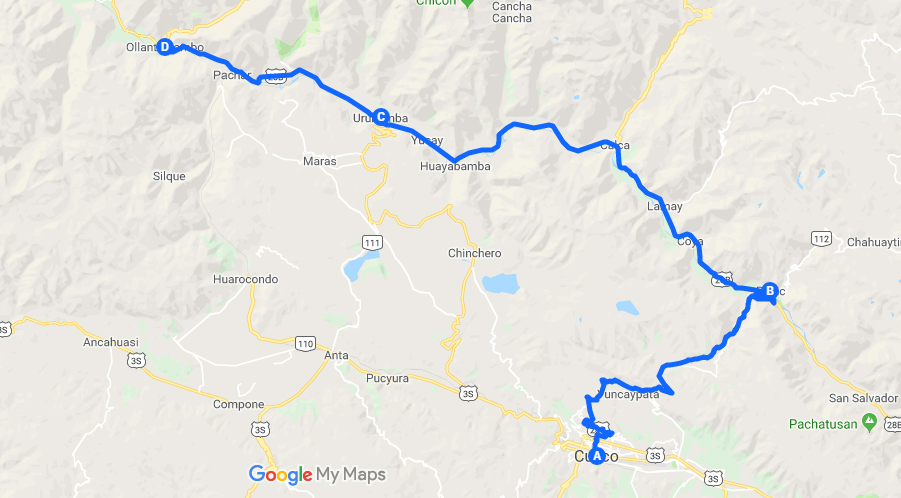
The visits of the itinerary 1:
A. Cusco
B. Pisac
C. Urubamba
D. Ollantaytambo
A. Cusco
Leave very early in the morning to have time to visit everything.
Buses to Pisac leave from Puputi street (40-45 minutes walk, 10 soles).
It is also possible to take the bus on the same street (7 soles), but I do not recommend it: for a few soles more, the colectivo is a cleaner and a faster option.
B. Písac
Take the morning to visit this town built by the Incas in the 15th century.
Its main attraction is the archaeological complex of Pisac (Opens at 7 a.m.). It is one of the most beautiful sites in the Sacred Valley with an impressive view of the surroundings.
There are temples, a residential area with agricultural land, towers, tunnels and an astronomical observatory. From afar, you can see the Tankanamarka which is considered the largest cemetery of the Inca Empire.
The complex is located in the highest area of the villages and there is no bus to get there: It is necessary to walk (2.5 miles) or take a cab. A good idea is to take a taxi to go up and get down by foot to save time.
Before leaving, visit the andean market of Pisac which is located in the Plaza Constitución. It is the largest in the region and has everything you need.
Of course, the handicraft section is the most touristy, but if you go to the fruit and vegetable section, you will have a much more local experience. Plus, this will be a great opportunity to have a nice fresh fruit juice!
- Read also: My Pisac Article to learn more about the city

C. Urubamba
This town makes for a convenient stop, as it’s right on the route between Pisac and Ollantaytambo.
If you feel like taking a short break, you can grab lunch and stretch your legs around the Plaza de Armas. It’s a pleasant spot for a quick stroll—just keep in mind it’s not the most exciting stop in the Sacred Valley, so there’s no need to linger too long.
Alternatively, you can head straight to Ollantaytambo for a more scenic and satisfying lunch experience!
- Read also: My Complete Article about Urubamba
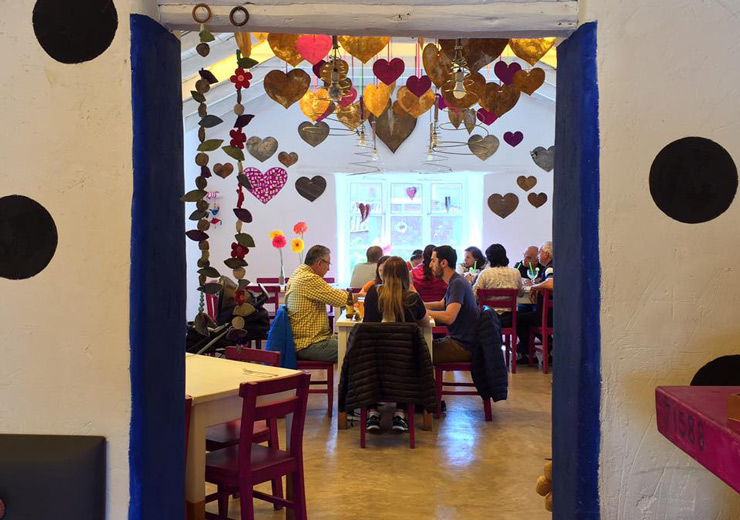
D. Ollantaytambo
In the afternoon discover Ollantaytambo, the only Inca village that has maintained its original layout. It was of great importance for being a convergence point of several routes, and a control site on the way to Machu Picchu.
Do not miss the fortress of Ollantaytambo, which was an important military, religious and political center.
If you still have time left, you can go up to the Pinkullyuna (closes at 4:30 pm), a place that was used as an agricultural warehouse, located on top of the fortress. Free admission.
What is essential, however, is to stroll through the small streets and squares, for this is a truly charming village.
It is easy to spend the whole afternoon there because there is so much to see.
Spend the night in Ollantaytambo, it has a wide range of hotels and restaurants for all budgets.
- Also Read: My Complete Article about Ollantaytambo
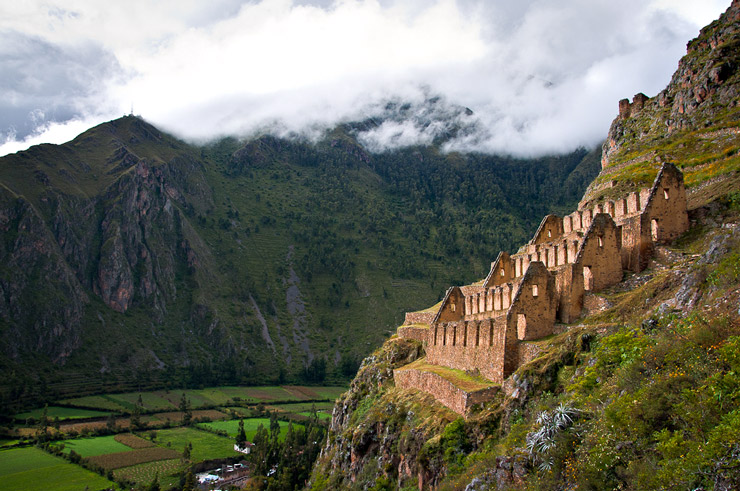
Itinerary 1: Version with Chinchero
If you’re planning to spend the night in Cusco instead of Ollantaytambo, you can also make a stop in Chinchero, which is conveniently located on the way.
Just keep in mind that this will mean less time in Ollantaytambo, which has a lot more to explore. It really depends on your itinerary and, more importantly, your schedule—everything in Chinchero closes by 6:00 p.m.
Avoid unnecessary detours: if you’re staying overnight in Ollantaytambo, your day will already be full enough!
Chinchero
This picturesque village is famous for its beautiful textiles, making it the perfect place to learn about traditional weaving techniques, natural dyeing, and wool spinning—a rich craft tradition passed down from generation to generation.
Don’t miss the local handicraft market, where you’ll find colorful carpets and high-quality clothing at better prices than in many other parts of the region!
Chinchero also features a fascinating archaeological site built by Tupac Inca Yupanqui in the 15th century.
Before you leave, I highly recommend wandering through the village streets. Not many travelers take the time to do so—and that’s a real shame!
- Read also: My Guide to Chinchero
Itinerary 2: Chinchero, Moray, Maras, Ollantaytambo
The visits of itinerary 2:
A. Cusco
B. Chinchero
C. Moray
D. Maras
E. Ollantaytambo
A. Cusco
The ideal way to conclude these 3 days in Cusco is to go to Chinchero-Moray-Maras in the morning and Ollantaytambo in the afternoon.
Leave in the morning, take the colectivo on Pavitos street in the direction of Urubamba y Ollantaytambo and get off at Chinchero (40 min by car from Cusco).
B. Chinchero
The day begins with a visit to visit to Chinchero.
As I explained in the previous itinerary, it is a beautiful village of white houses known for its traditional traditional weaving, whose technique is passed down from mother to daughter. It is fascinating to learn about the whole process of textile manufacturing process. I really recommend you to attend a demonstration.
At the handicrafts market you will find beautiful examples of clothing, carpets, etc.
I bought two rugs during my last stay, at a better price than in other places!
Also visit the church in the square and the small archaeological complex from the 15th century.
- Read also: My Complete Guide to Chinchero
C. Moray
Take a bus, now in the direction of Ollantaytambo, and mention to the driver that you are going to Maras.
He will drop you off on the road at the at the intersection of Maras and Moray where several cabs are always waiting for you. The two sites are very close, but the only transportation to get there are the taxis.
- The easiest option: take a cab to visit visit Maras and Moray, who will wait for you at the site during the visit.
- The cheapest option: take a cab to visit Moray (30 soles) which will take you back to the village of Maras. From there, you can walk to the salt mines of Maras (approximately 1-1:30 h, 2.7 miles). Of course, it is also necessary to calculate the return by foot uphill.
For its circular terraces some people like to suggest that Moray was built by extraterrestrials. Of course, this far-fetched theory is false, but its earthly origin is still surprising: it was an agricultural research center from the inca period.
In fact, it is a group of agricultural terraces with at least 20 different microclimates!
The temperature difference of up to 15 ºC between each terrace and the good irrigation system allowed the Incas to cultivate plants from different regions of the empire, but also to carry out experiments. Thus, they were able to create hybrid species.
- Read also: My Article on Maras and Moray
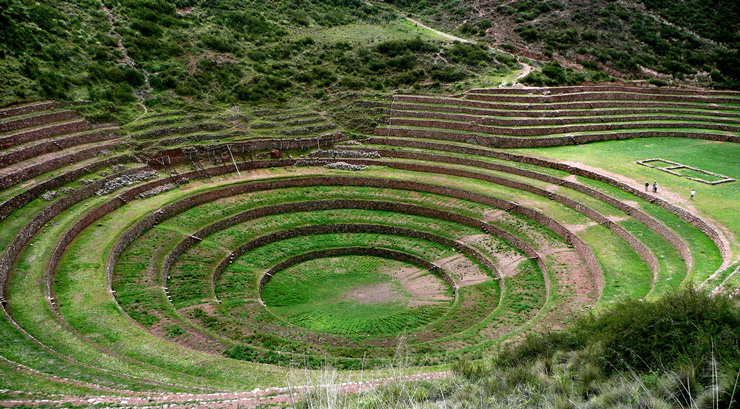
D. Maras
With its 3000 pools on which the sun reflects, Maras is my favorite place in the Sacred Valley, this is one of the best places to take pictures!
The salt flats have existed since the Incas were around and are very important for the local economy, as they employ over 800 families in the region, that organized themselves in cooperatives.
You can buy different products from Maras, salt souvenirs made by the local people at a very good price.
- Attention: the entrance fee to Maras (10 soles) is not included in the tourist ticket.
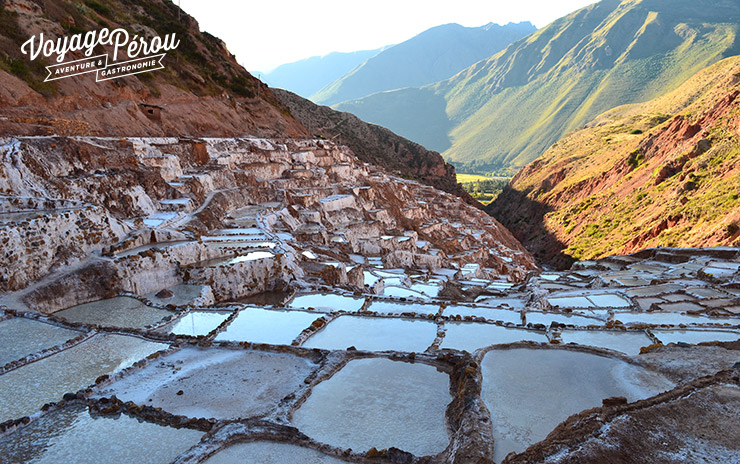
E. Ollantaytambo
Take the same route back and hop on a bus to Ollantaytambo—it’s about an hour’s journey. You’ll arrive just in time for lunch, and luckily, the town has plenty of great food options.
Known as the Inca Living Town, Ollantaytambo is full of charm and history. Though you could easily spend a full day here, an afternoon is enough to see the highlights if you’re short on time.
This was a strategic stronghold for the Incas and the site of key battles against the Spanish conquistadors led by Francisco Pizarro. It’s also where Manco Cápac II led one of the few successful Inca counterattacks.
Start with the archaeological site of Ollantaytambo, located on a hillside overlooking the town. The site served both military and ceremonial purposes, and the views are stunning.
If your budget allows, consider hiring a local guide to bring the site to life with historical insights.
After exploring the ruins, wander through the old Inca streets and stop by the Plaza de Armas—it’s one of the best-preserved parts of the town.
Have some energy left? Hike up to Pinkuylluna, a former Inca storage site perched in the cliffs. The trail is short but steep, and the views over the Sacred Valley are absolutely worth it. Note: Access closes at 4:30 p.m.
Spend the night in Ollantaytambo—it’s a peaceful and strategic spot to continue your journey the next day.
- Read also: The Complete Article on Ollantaytambo
The Best Tours in Cusco
Prefer to explore Cusco with a guided tour instead of organizing everything yourself? Here are the best options to see the highlights without the stress:
1. Inca Sites Around Cusco: Visit Sacsayhuamán, Qenqo, Puca Pucara and Tambomachay with hotel pick-up included.
2. Sacred Valley Day Trip: The must-see sites of Pisac, Ollantaytambo and Chinchero in one day, with lunch included.
3. Moray and Maras: Half-day tour from Cusco to the agricultural terraces of Moray and the salt mines of Maras, with hotel pickup.
Tip: To make sure you get a spot—especially during peak season—it’s best to book your tours in advance. Always double-check what’s included in the price (transportation, meals, entrance fees, etc.).
What about Machu Picchu?
Of course, the logical next step after spending a few days in Cusco is visiting the incredible Machu Picchu.
To get there, you’ll need to travel to Aguas Calientes (also called Machu Picchu Pueblo), with departures from either Cusco or Ollantaytambo. Choose the option that best fits your itinerary.
A great plan is to arrive in Aguas Calientes in the afternoon, spend the night there, and visit Machu Picchu early the next morning.
As it’s one of the most popular tourist attractions in the world, make sure to book your entry ticket in advance. There are 3 types of tickets available:
- Standard Machu Picchu Ticket
- Machu Picchu + Huayna Picchu Ticket (very limited spots—book months ahead!)
- Machu Picchu + Machu Picchu Mountain Ticket
Complete Guide to Machu Picchu
Differences Between Huayna Picchu and Machu Picchu Mountain
How to Get to Machu Picchu
1. By Train
You can leave from Poroy Station (25 minutes from Cusco, 3-hour train ride) or Ollantaytambo Station (1h30 ride). Two companies operate the route: Peru Rail and Inca Rail.
It’s essential to book in advance, especially during the high season.
From Aguas Calientes: You’ll need to take a bus up to the Machu Picchu entrance. Buy your ticket here:
2. By Bus + Hike (Budget Option)
This is the cheapest option—but also the longest and most tiring.
Route (local transport):
- Cusco to Santa María (5h) – departs from Santiago terminal
- Santa María to Santa Teresa (2h)
- Santa Teresa to Hydroelectric Station by taxi (20 min)
- Hydroelectric Station to Aguas Calientes – walk 2.5 to 3 hours or take a 45-minute train
A more direct option is the tourist van from Cusco to Hydroelectric. It’s easier and faster, and you can book the return trip together.
Route (with van):
- Cusco to Hydroelectric (7h), departure around 7:30 a.m.
- Walk from Hydroelectric to Aguas Calientes (2.5–3h)
- Return trip usually leaves at 2 or 3 p.m. the next day
Important: This route is not recommended during the rainy season due to risk of landslides and floods. Please take the warning seriously—accidents happen every year.
3. By Trekking
If you have the time and want an unforgettable adventure, trekking to Machu Picchu is 100% worth it. Here are your main options:
- Inca Trail (4 days) – book months in advance
- Inca Trail Short Version (2 days)
- Salkantay Trek (5 days)
- Inca Jungle Trek (4 days) – perfect for adventure lovers
- Lares Trek (4 days)
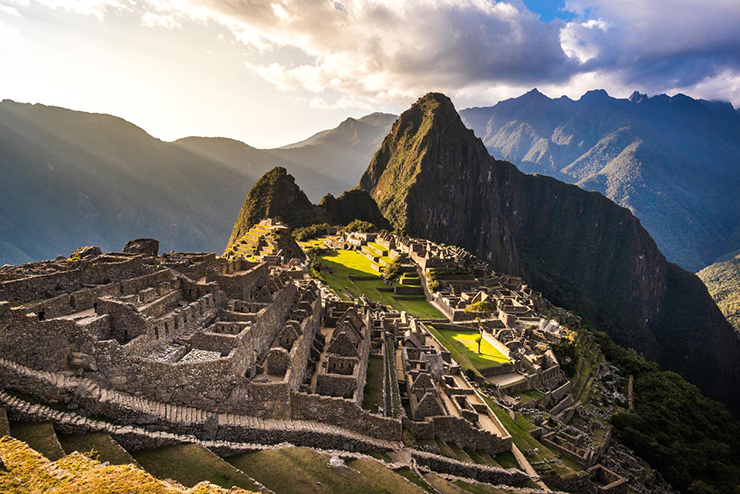
Where to Stay in Cusco
- Backpacker La Bo’M: One of the best hostels in Cusco. Founded by Sarah, a French expat, it includes a delicious crêperie next door. Perfectly located in the charming neighborhood of San Blas, it offers good Wi-Fi, a cozy vibe, and of course, amazing crêpes to start your day! Dorms from only $13 USD and private rooms from $33 USD.
- La Casona Real Cusco: For those looking for more comfort, this charming traditional-style guesthouse is located on a quiet street just steps from the Plaza de Armas. Impeccably clean, with hot water, great Wi-Fi, and a warm welcome. Breakfast included, all from just $76 USD per night!
- Hotel Tierra Viva Cusco San Blas: In the lovely San Blas neighborhood, this upscale hotel offers spacious rooms with very comfortable beds. Its modern décor with local touches and peaceful interior courtyard make for a relaxing stay. Buffet breakfast included. From $98 USD per night!
- Antigua Casona San Blas: A chic and intimate 4-star hotel in San Blas. It features very comfortable rooms, a warm atmosphere, and a tasteful blend of modern and traditional décor. Don’t miss their Piedra & Sal restaurant, one of Cusco’s best. Excellent breakfast included. From $250 USD per night.
- Palacio del Inka, a Luxury Collection Hotel: For a romantic stay in Cusco, this 5-star gem is housed in a spectacular colonial building across from Coricancha, with roots dating back to Inca times. Enjoy the indoor pool, gym, spa, bar, and restaurant. Delicious breakfast included. From $325 USD per night.
Cusco Map: What to Visit in 2 or 3 Days
To help you plan your stay, here’s a detailed map of Cusco with the main attractions and suggested walking routes for a 2 or 3-day visit.
Book Your Flight at the Best Price
Planning a trip to Peru? To get the best deal on your flights, I recommend using this flight comparison tool, in partnership with Skyscanner.
It’s the easiest way to find the lowest prices for both international flights and domestic flights within Peru—ensuring you pay the best rate with no hassle!
Rent a Car in Peru
Renting a car is one of the best ways to explore Peru at your own pace and make the most of your trip!
Personally, I always use Booking.com Cars for a few key reasons:
- Easily compare prices from all major rental agencies in one place—finding the best deal has never been easier!
- Free cancellation on most bookings, so you can reserve with peace of mind.
- Better insurance coverage at a lower price than rental companies—saving you money with no extra effort.
Click the button below to find the best car rental deals in Peru:
Rent a car
Book entrance tickets and guided visits
Take a travel insurance
Book a tour
✈️ Book your flight
Traveling to Peru? These articles will help you!
Discover all my articles about Peru: All my tips and itineraries to plan your trip in one place!
40 EPIC Things to Do in Peru (+ My Best Tips)
- Itinerary: 5-6 days in Peru – Lima, Arequipa, Colca Canyon, Cusco, Sacred Valley and Machu Picchu
- Itinerary: 7-8 days in Peru – See the maximum in one week
- Itinerary: 10 days in Peru – The ideal itinerary for a short stay in Peru
- Itinerary: 2 weeks in Peru – The classic route
- Itinerary: 15 days in Peru – An itinerary that includes northern Peru
- Itinerary: 3 weeks in Peru
- Itinerary: 3 weeks in Peru + Bolivia – The best itinerary for visiting both countries
- Itinerary: 1 month in Peru – What to see and do in 30-31 days
You’re using Pinterest? Here is the picture to pin!
